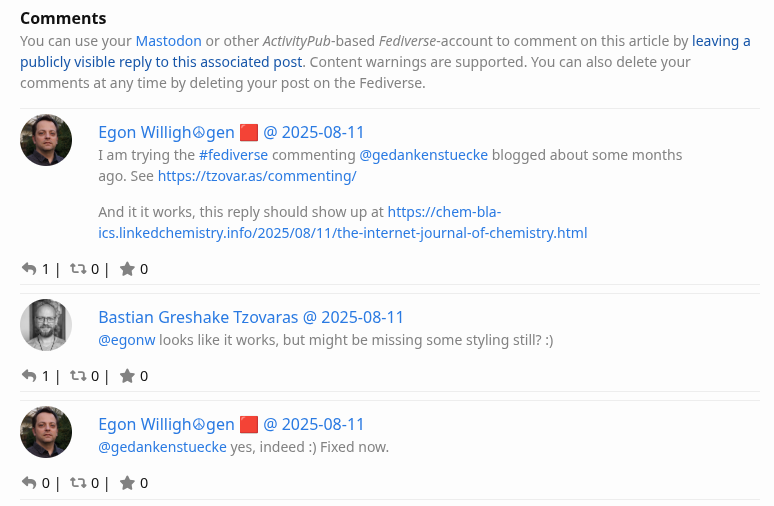-
Rescuing Scholia: will we make it in time?
What started out in 2016 on Twitter became a (small) award winning decade long collaborative project. Unfortunately, the future is not clear. We are at odds if it will survice the growth of Wikidata and in particularly the SPARQL graph split. To be clear, the choice for Blazegraph initially worked great, but after it was bought by a big company, developed halted. Very unfortunate for Wikidata. Unlike earlier, we no longer have funding, and rewriting Scholia at this scale takes a good bit of effort. We already held a few hackathons. -

WikiPathways curation reports on profile pages
I have been running automated curation tests for many years now, at least from before 2018. Because it has been done without funding, it has not been as nicely integrated, and depends, for example, first on the RDF generation to be integrated in the GitHub Action. So, I still run them regularly (often in the morning during breakfast). Meanwhile, the curation tests help the project to monitor and maintain the quality of the pathways. The curation reports have been integrated into pathway pages for some time now. -
20 years of blogging
Today, exactly 20 years ago I started this blog. Two years ago I decided to upgrade my blog to one with version control. A decision I am still very excited about. It allowed me to start innovating my blog again. As part of this, and following the step Lars took ealier, I registered my blog with Rogue Scholar and I started migrating blog posts from blogger.com to my new location. I completed the years 2005, 2006, 2007, and 2008 now. -
25 years of the Chemistry Development Kit
Twenty five years ago the Chemistry Development Kit (CDK) was founded. The Chemistry and Internet (ChemInt2000) had just ended (it ran from 23 to 26 September) and my friend and I had taken the Amtrak night train from Washington to South Bend. At that time there were two leading Java applets for chemistry, JChemPaint and Jmol. I had hacked Chemical Markup Language support into both of them, and Dan Gezelter (Jmol and openscience.org), Christoph Steinbeck (JChemPaint), and me took the opportunity of being in North America to discuss if we could use a common code base. Chris’ compchem had done something similar. Peter Murray-Rust, who had also attended ChemInt2000 like me and Chris did not attend. -
The eNanoMapper project deliverables
This is a bit of an administrative post and historic, but keep coming back to the question, where are all the deliverable of the (past) project. Now, since many eNanoMapper project deliverables were public, we were able to release most of them on Zenodo. This post makes an overview. -
AI Technologies in Academia
I have had the Open Letter: Stop the Uncritical Adoption of AI Technologies in Academia from June 27 open for some time now. I thought I wanted to sign it, but got stuck on the first paragraphs multiple times: -

Integrating comments via the Fediverse
My old blog had (has) comments via the Blogger.com platform, but I did not have anything for the new blog. A couple of options are used, like Disqus and comments via GitHub. However, these both have the downside of a vendor lock-in and the whole point of moving my blog was to break out from such lock-ins.
- •
- 1
- 2